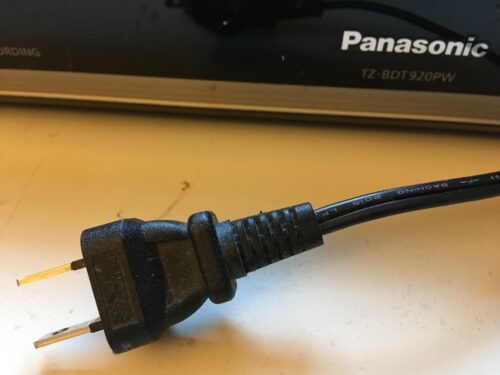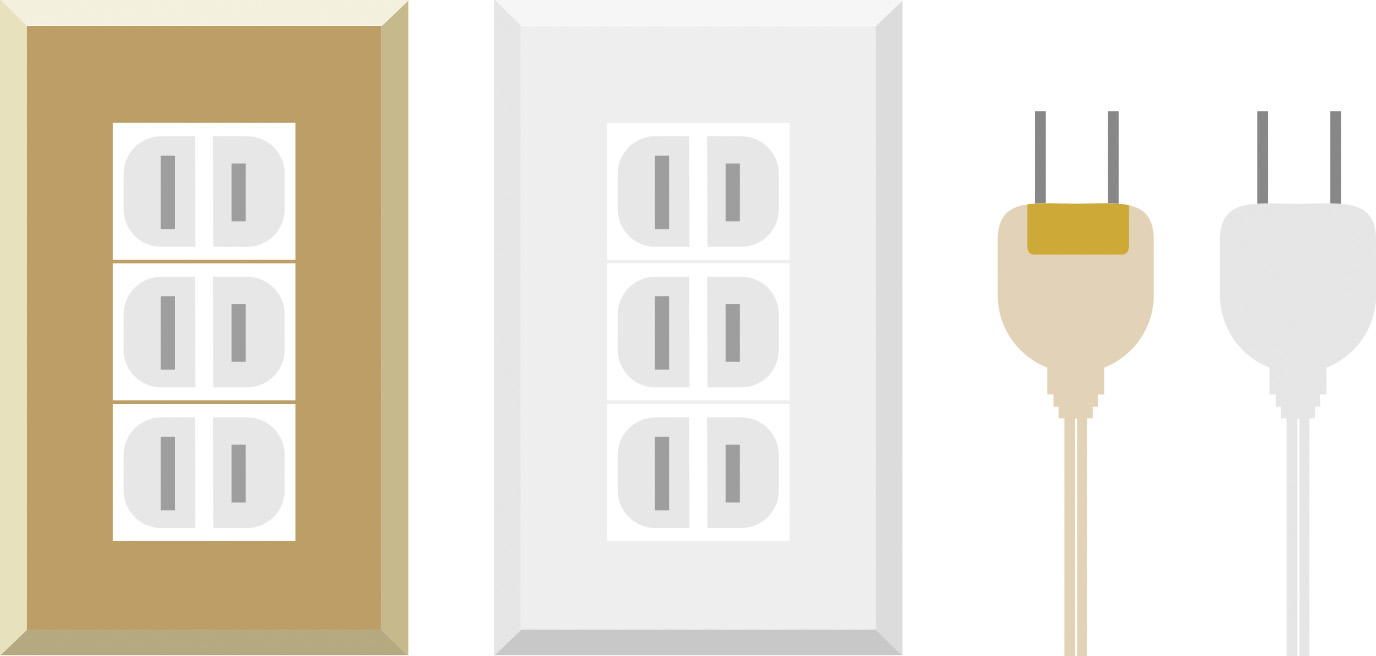Power cord for home appliances
Originally, there is a direction to plug the power cord plug into the outlet, but in the case of home appliances that we usually use, it can be used without problems even if it is plugged in the opposite way.
Some audio products and LCD TVs are specified to be plugged into an outlet. If you do not plug it into the outlet correctly, the performance will not be exhibited, so the manufacturer has specified it “on purpose”.
To distinguish, insert the white line or the line with fine letters on the AC cord so that it is on the N side (left side) ground side of the outlet. You can use it in the opposite way, but it seems that the sound quality and image quality may change. I think it’s a subtle level that ordinary people don’t understand. By plugging the power cord plug into the outlet in the correct direction, noise can easily escape from the N ground side of the outlet to the ground. It seems that noise does not enter and the sound quality becomes clear.

It’s hard to see in the picture, but there was a small letter on the power cord of the Panasonic Blu-ray recorder at home. You can insert the plug on that line into the N side (longer side) of the outlet, but the power cord can be removed from the Blu-ray recorder body, and there is no direction to insert it on that side. did. In other words, there was no direction to plug it into an outlet, and in fact, there was no mention in the instruction manual of the Blu-ray recorder about the direction to plug the power cord.
However, some devices specify the direction in which the power cord plug is inserted into the outlet. You can use it in reverse, but even if you turn off the power on the device side, the voltage will remain on the L side (100V side) just by turning off the N side (0V side) of the outlet. There may be no actual problem, but if a weak current continues to flow to the device side and this state continues for one, two to several years, there may be an electricity bill, but the life of the device is not a little affected. it might be. I think you should check the power cord at home once.
How to connect “L” and “N” of switching power supply
The safety standard stipulates that the L side of this outlet should be connected to the L terminal of the switching power supply and the N side of the outlet should be connected to the N terminal of the switching power supply. The manufacturer’s data collection is also measured by connecting in that way, so if you connect and measure in the opposite direction, the measured value of noise will be different.

There is a fuse immediately after the L terminal of the switching power supply.
If the inside of the power supply is short-circuited (short-circuit between the AC line and the ground line), the fuse immediately after the L terminal is blown to protect against electric shock. The fuse on the L side is blown because the AC line L is 100V.
The fuse will blow even if the L terminal and N terminal are connected in reverse, but the 100V on the non-grounded side (L) of the AC line remains connected to the N terminal of the power supply (100V is applied and a weak current flows). It is dangerous because it becomes.
